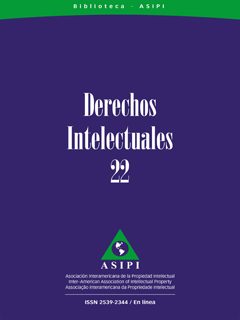Intellectual Rights 22
PTEIntellectual Property -PI- is a discipline that encompasses multiple spheres of knowledge, and is nourished by all the social, economic and political advances that cover our day-to-day life. Faced with this reality, it is increasingly imperative to study, work and analyze all issues in a multidisciplinary way. The IP professional must advance in staggered steps, in order to keep up with the constant and accelerated innovation that this subject possesses. ASIPI, as the driving force behind the constant study of IP, has advocated from its beginnings for the promotion of critical thinking and analysis. That is why I am proud to present volume 23 of "Intellectual Rights", which is an annual publication that contains various studies on distinctive signs, new creations, copyrights and other cutting-edge topics, prepared by members of ASIPI . - Maria del Pilar Troncoso



